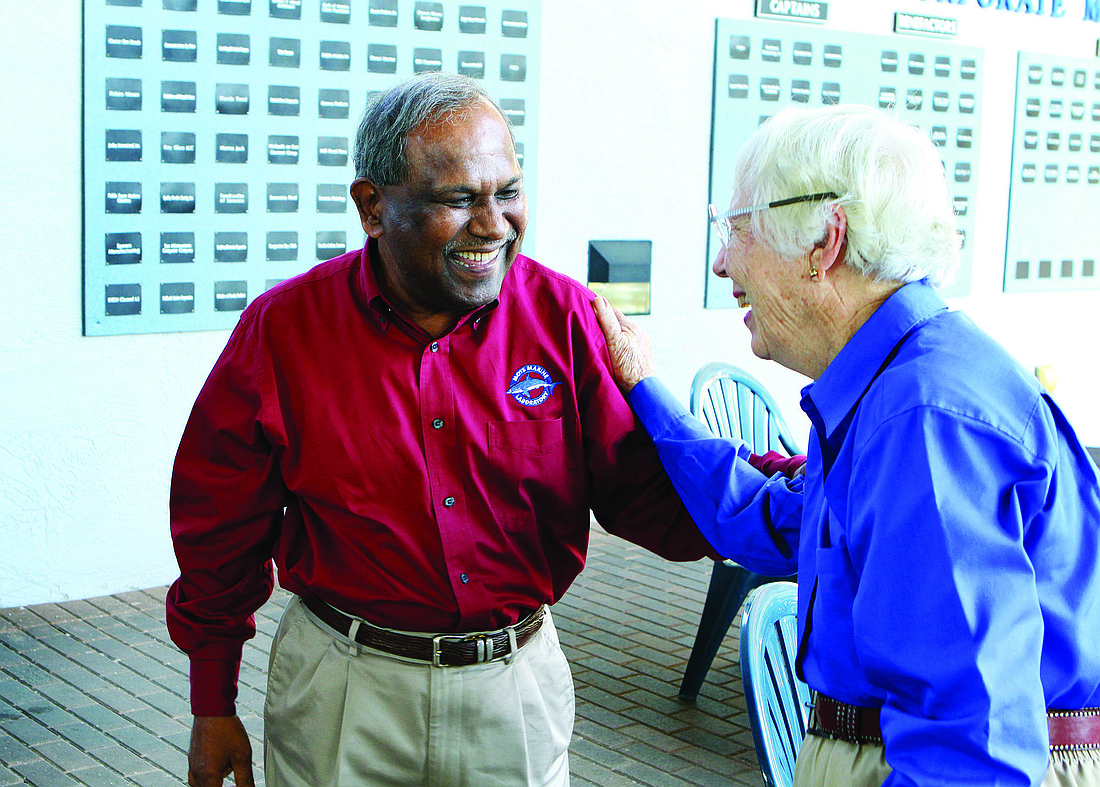- May 5, 2024
-
-
Loading

Loading

The aquarium where the more than 100 people — all Mote staff, volunteers and board members with at least 15 years of service and their spouses — stood Tuesday, March 15 looks nothing like it did when Dr. Kumar Mahadevan became CEO 25 years earlier. Back then the aquarium was not the community attraction that today draws 350,000 visitors per year.
“It was back then what I liked to call ‘a glorified pet shop,’” Mahadevan said.
In 1986, Mote was just a small but highly regarded laboratory with a budget of $2 million, 58 staff and 68 volunteers; last year, Mote had a $23 million budget, 245 professional staff and 1,400 volunteers. On March 15, the group of longtime Mote staff and supporters gathered for a surprise party to honor Mahadevan for his 25 years as CEO.
“I was surprised,” Mahadevan said after the party. “I thought I was going to a meeting.”
For the record, Mahadevan didn’t want the job of CEO. Originally from India, he earned his Ph.D. from Florida State University and is a benthic ecologist by training. He was hired as a senior scientist at Mote in 1978. But when Dr. William Taft, who hired Mahadevan, resigned in 1983, Mahadevan agreed to serve as co-director on an interim basis. He was hesitant to take a job that would require him to focus on administration rather than research. But finally, on March 1, 1986, Mahadevan accepted the job of permanent CEO.
Mahadevan said that one transformative day in his 25 years as CEO came in 1988, when Mote opened its shark tank. That day, the aquarium drew a record 22,000 people. As a result, the public took notice of Mote.
“It transformed the aquarium from a glorified pet shop to a true interactive aquarium that really showcased our research,” Mahadevan said.
Mahadevan said that the biggest challenge at Mote continues to be funding. Approximately half of Mote’s budget comes from grants; the remainder comes from sources such as donations, fundraising and admission fees to the aquarium. Recently, Mote completed its strategic plan that addresses its future financial challenges; Mote’s goal is to grow the current endowment of $10 million to $50 million by 2020, allowing the endowment to generate 20% to 30% of Mote’s annual budget.
Mahadevan said that Mote’s research is important to the community. Some of the research that interests him most relates to sharks and the fact that they are largely wound-resistant and seldom develop cancer. The implications of that research could someday be applied to human diseases. Mote’s aquaculture work could also be essential to preserving fisheries and coral reefs throughout the world.
“I see our role as serving this community,” Mahadevan said. “We always ask the question of, ‘How this is going to help the community?’”
Contact Robin Hartill at [email protected]